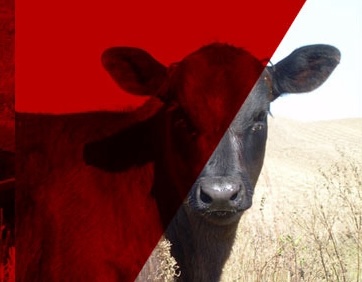As producers enter the spring season, there is a never-ending list of tasks to get done. Fix fence, check water sources, herd health tasks, branding, and turnout are top of the list. Pasture weed control has typically been a task that comes later in the year, especially for leafy spurge. However, that may be changing.
Land managers and ranchers across northern Nebraska are noticing a trend: leafy spurge (Euphorbia esula) is blooming earlier than it used to. Historically, leafy spurge typically began blooming in late May to early June. However, in recent years, reports suggest that leafy spurge is now entering bloom one to two weeks earlier.
Why Is Leafy Spurge Blooming Earlier?
Blooming of leafy spurge is influenced by air and soil temperatures, which have trended towards warming up faster during early spring. Warmer spring temperatures and earlier soil warming (often reaching 50°F+ by mid-April) are leading to earlier green-up and flowering across much of Nebraska. These changes are consistent with broader trends toward longer growing seasons and earlier plant development stages.
Further pushing along development are more very warm days early in the season. Days with high temperatures in the 90’s during the first part of June have been increasingly more common over the past few decades across the entire state, but that trend is strongest in the northern and western sections of the state.
Implications for Herbicide Timing
The shift in bloom timing has important implications for effective leafy spurge control:
- Optimal herbicide timing for leafy spurge is at the bud to early bloom stage. UNL weed scientist, Dr. Stevan Knezevic recommends spraying at 30-50% flower. Herbicides containing aminocyclopyrachlor/metsulfuron picloram, imazapic, dicamba, 2,4-D, or clopyralid are most effective during this window. Specific recommendations for herbicide control can be found in EC130 – Guide for Weed, Disease and Insect Management in Nebraska.
- With earlier blooming, this treatment window can fall as early as late April instead of the traditional mid-to-late May period. This is regulated by annual spring temperatures though, so a cooler spring could mean a later spraying window, even if the trend is toward earlier in the year.
- Delayed spraying may lead to reduced herbicide efficacy, patch spread, and higher long-term control costs. Reduced efficacy through a delay in spraying can come in two different ways when dealing with leafy spurge:
- The lifecycle of leafy spurge causes plants to flower after new shoots have formed. In addition to growing from perennial root stock called rhizomes, leafy spurge spreads through seeds from the flowers. If spraying occurs after the flowers have set seed, a new generation of leafy spurge seeds have the potential to be recruited, further exacerbating the situation.
- Leafy spurge is generally considered a cool-season (C3) plant. Therefore, spraying later in the summer as temperatures climb can lead to lower uptake of herbicide. Broadleaf-selective herbicides used on leafy spurge are systemic, meaning they rely on uptake through the plant’s stomata. As temperatures soar into the 90’s in late June and into July, cool season plants can become water-stressed, sometimes even entering a dormant period triggered by the high temperatures. To reduce water loss through the stomata to evapotranspiration, cool-season plants slow down their photosynthesis rates by closing their stomata. If the plants are stressed and not photosynthesizing, uptake is greatly reduced which leads to a reduction in herbicide efficacy.
Decision Guide for Leafy Spurge Management
1. Start Monitoring Early:
- Begin scouting for leafy spurge green-up and regrowth in early to mid-April.
- Watch for bud formation and first signs of flowering.
2. Use Soil Temperatures as a Guide:
- When soils consistently reach 50°F, spurge will begin active growth.
- Use local weather stations or the Soil Temperature Update page at UNL’s CropWatch to track.
3. Adjust Herbicide Applications:
- Target applications for late April to early May, depending on local bloom progression.
- Prioritize early bloom stage for maximum impact.
4. Consider Soil Texture and Other Environmental Variables:
- Leafy spurge thrives in sandy soils where it can develop extensive root systems. Persistent herbicides, like picloram, can leach through the soil profile and lead to water quality issues. Label instructions have considerations for applications in sandy soils with higher water tables. Exercise caution when broadcast spraying in these conditions and always read and follow label instructions.
5. Don’t Forget the Fall Application Window:
- A fall application two weeks before the first killing frost (late September to early October) can be highly effective, especially if spring timing is missed or if re-growth occurs. To test if spurge plants are still actively growing, simply break the stem and if the “white milky sap” is visible, go ahead and spray. On the contrary, lack of milky sap suggests that the spurge stopped growing, and it is going dormant, as it is preparing for winter time. Thus, do NOT apply herbicides.
6. Follow Up and Re-Scout:
- Monitor treated areas throughout the season and reassess control in fall.
- Plan for re-treatment in persistent patches the following year.
- Be persistent, large patches of spurge may take several years of spraying to effectively manage.
Article by Ben Beckman (educator), Jacob Harvey (research project coordinator), Ryan Benjamin (educator) with Nebraska Extension.

